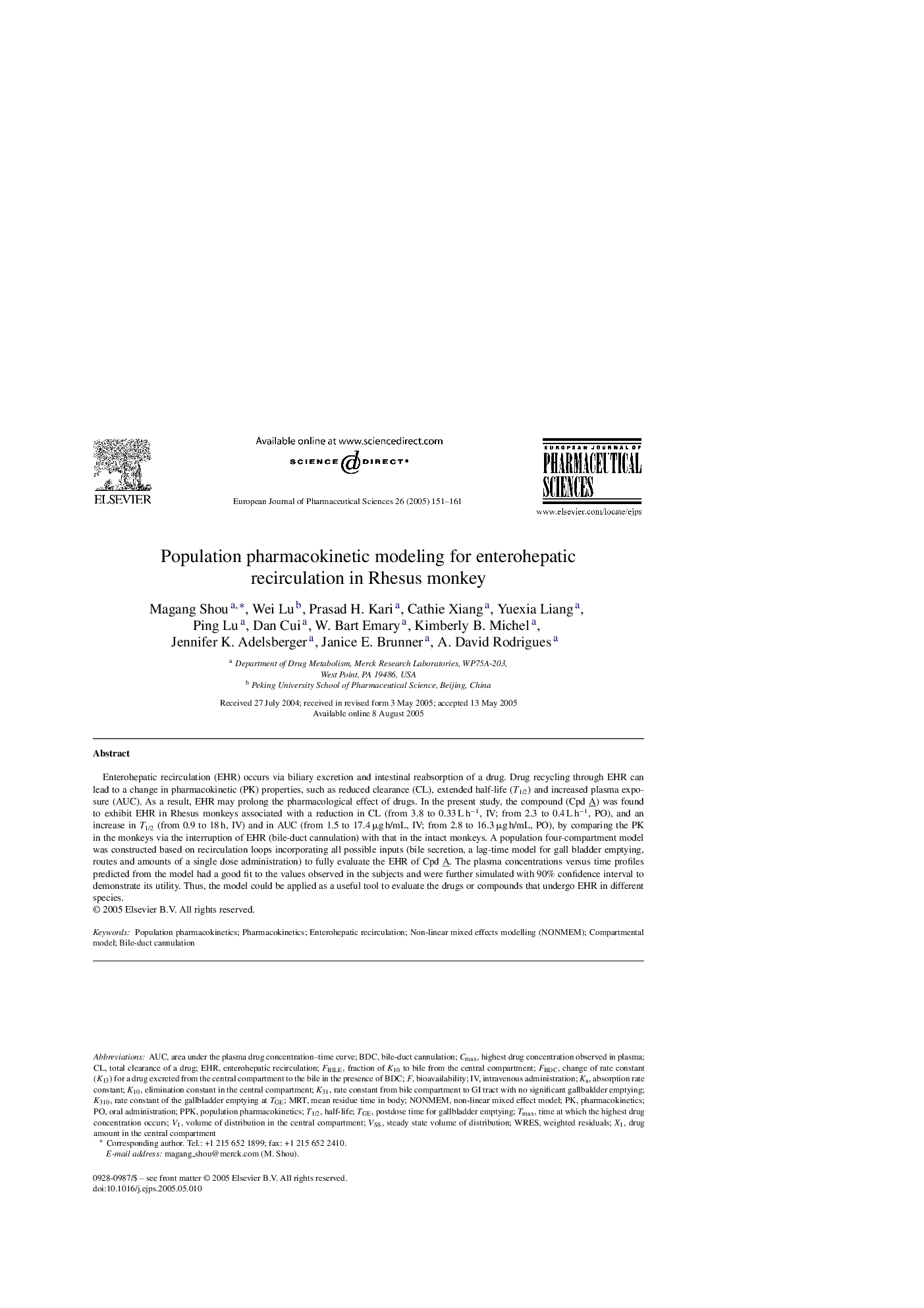| کد مقاله | کد نشریه | سال انتشار | مقاله انگلیسی | نسخه تمام متن |
|---|---|---|---|---|
| 9917615 | 1556304 | 2005 | 11 صفحه PDF | دانلود رایگان |
عنوان انگلیسی مقاله ISI
Population pharmacokinetic modeling for enterohepatic recirculation in Rhesus monkey
دانلود مقاله + سفارش ترجمه
دانلود مقاله ISI انگلیسی
رایگان برای ایرانیان
کلمات کلیدی
TGECmaxWeighted residualsK10K31BDCPPKMRTtmaxAUC - AUCPopulation pharmacokinetics - Farmakokinetics جمعیتt1/2 - t1 / 2VSs - VSSOral administration - اداره دهان و دندانIntravenous administration - تزریق داخل وریدیAbsorption rate constant - ثابت جذبsteady state volume of distribution - حجم ثابت توزیعNONMEM - غیرممکنPharmacokinetics - فارماکوکینتیکBioavailability - فراهم زیستیCompartmental model - مدل مجتمعHalf-life - نیمه عمرEHR - پرونده الکترونیکی سلامتEnterohepatic recirculation - گردش خون انتروپیک
موضوعات مرتبط
علوم پزشکی و سلامت
داروسازی، سم شناسی و علوم دارویی
اکتشاف دارویی
پیش نمایش صفحه اول مقاله

چکیده انگلیسی
Enterohepatic recirculation (EHR) occurs via biliary excretion and intestinal reabsorption of a drug. Drug recycling through EHR can lead to a change in pharmacokinetic (PK) properties, such as reduced clearance (CL), extended half-life (T1/2) and increased plasma exposure (AUC). As a result, EHR may prolong the pharmacological effect of drugs. In the present study, the compound (Cpd A) was found to exhibit EHR in Rhesus monkeys associated with a reduction in CL (from 3.8 to 0.33 L hâ1, IV; from 2.3 to 0.4 L hâ1, PO), and an increase in T1/2 (from 0.9 to 18 h, IV) and in AUC (from 1.5 to 17.4 μg h/mL, IV; from 2.8 to 16.3 μg h/mL, PO), by comparing the PK in the monkeys via the interruption of EHR (bile-duct cannulation) with that in the intact monkeys. A population four-compartment model was constructed based on recirculation loops incorporating all possible inputs (bile secretion, a lag-time model for gall bladder emptying, routes and amounts of a single dose administration) to fully evaluate the EHR of Cpd A. The plasma concentrations versus time profiles predicted from the model had a good fit to the values observed in the subjects and were further simulated with 90% confidence interval to demonstrate its utility. Thus, the model could be applied as a useful tool to evaluate the drugs or compounds that undergo EHR in different species.
ناشر
Database: Elsevier - ScienceDirect (ساینس دایرکت)
Journal: European Journal of Pharmaceutical Sciences - Volume 26, Issue 2, October 2005, Pages 151-161
Journal: European Journal of Pharmaceutical Sciences - Volume 26, Issue 2, October 2005, Pages 151-161
نویسندگان
Magang Shou, Wei Lu, Prasad H. Kari, Cathie Xiang, Yuexia Liang, Ping Lu, Dan Cui, W. Bart Emary, Kimberly B. Michel, Jennifer K. Adelsberger, Janice E. Brunner, A. David Rodrigues,